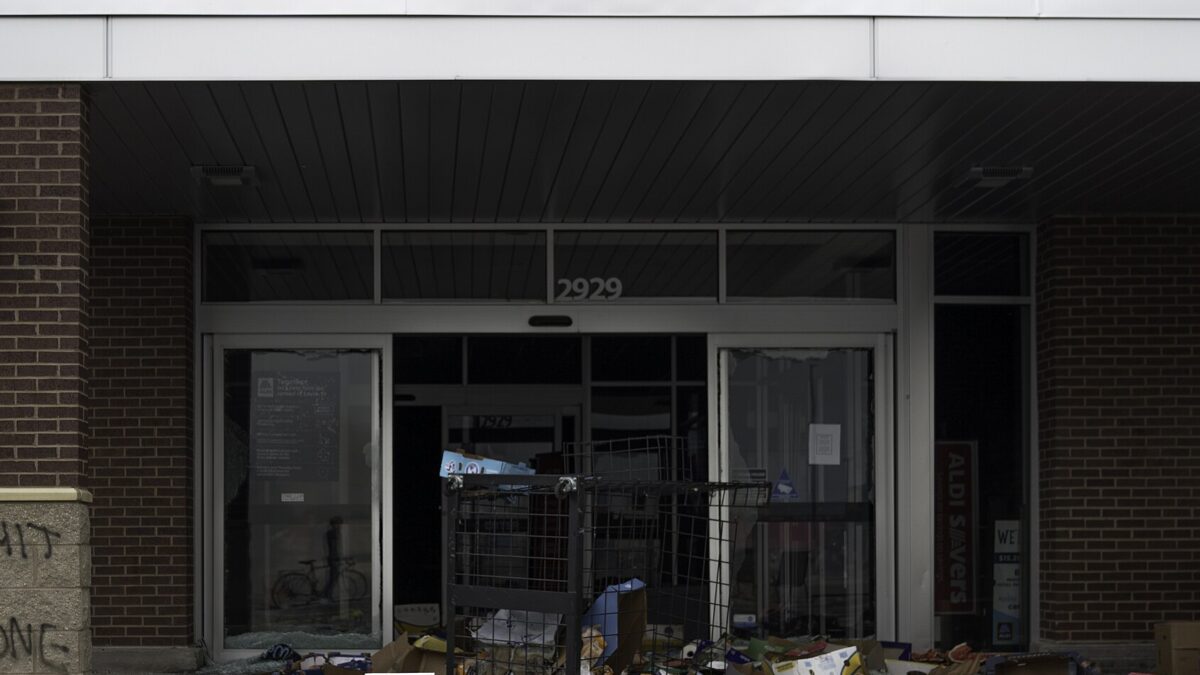A “militant-style group” laid claim to the blocks surrounding a makeshift memorial to George Floyd in Minneapolis, refusing to budge from their self-proclaimed autonomous zone unless the city meets their list of 24 demands and preventing police officers and press from entering.
The group’s demands include “recall the county prosecutor, fire the head of the state’s criminal investigative agency, and spend hundreds of thousands of dollars on programs to create jobs, combat racism and support affordable housing,” but after law enforcement officers faced “protests, resistance, [and] opposition” from inside the autonomous region, the city plans to tear down the barriers and reopen the streets after the trial for Derek Chauvin, the officer charged in Floyd’s death, in August at the earliest. Jury selection for the trial began this week.
“The George Floyd memorial is an ‘autonomous zone’ with several blocks controlled by activists. Police don’t even go in,” one NewsNation Now correspondent, who called the activists a “militant-style group,” reported. “We tried to respectfully get video — but left after two people confronted us near the barricades. Later learned many protestors don’t even feel comfortable there.”
The George Floyd memorial is an "autonomous zone" with several blocks controlled by activists. Police don't even go in. We tried to respectfully get video-but left after two people confronted us near the barricades.
Later learned many protestors don't even feel comfortable there. pic.twitter.com/5w32fxQ0hR— Brian Entin (@BrianEntin) March 10, 2021
One person was shot and killed in the zone close to the memorial last weekend, a crime and tragedy that might have been avoided if occupiers would not have prevented law enforcement from entering the zone.
“Police were not allowed to get into that area; he was carried out outside of the zone of George Floyd Square,” the victim’s aunt Kim Griffin, a Minneapolis resident, said. “It was made clear law enforcement was not welcome to penetrate that zone, which is an atrocity because his life was taken, and I mean who knows whether or not he would have survived had things been different.”
The area first fell prey to occupation as rioting, looting, and arson ripped through some of the nation’s largest cities shortly after Floyd’s death in May, but as the fires died down and business owners were left trying to reconcile the damage wreaked on their storefronts, the autonomous zone continued. In 2020, at least 19 nonfatal and fatal shootings occurred in the zone following Floyd’s death. Fourteen of those shootings occurred between May 1 and Aug. 31.
Businesses, some reports suggest, also suffered from both the pandemic and the establishment of the zone, falling from 90 percent occupancy last March to “probably less than 50 percent.”
Some conservative news outlets reported on the zone in October of last year, with The Federalist’s John Daniel Davidson writing:
The intersection and the neighborhood around [the Floyd shrine] have been “occupied” for months now. To get to the memorial — or “George Square,” as it’s now called — you must approach on foot. For a block in every direction, the streets are closed to traffic, barricaded by concrete roadblocks and makeshift chevaux de frise. Behind the roadblocks, plywood shields are stacked up next to a tent and an outhouse.
Davidson also reported that someone tried to stop him from taking pictures in the area due to a “healing circle” celebrating Indigenous Peoples Day (or Columbus Day).
Also to be fair, this is probably the most underreported “autonomous zone” of all throughout 2020.
— Shelby Talcott (@ShelbyTalcott) March 10, 2021
The occupied zone, however, has received little-to-no coverage from the corporate media since it began, similar to their treatment of other similar occupations last summer. In June, left-wing groups established the Capitol Hill Autonomous Zone in Seattle, a “cop-free area” created in protest of police brutality. Shortly after the occupation was established, a 16-year-old and a 19-year-old were killed in shootings. Others suffered injuries as people in the zone committed a series of crimes such as arson, burglary, assault, rape, and property destruction.









